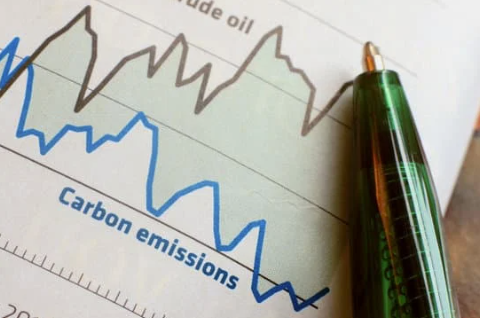June saw the first carbon credits labelled as high integrity under the ICVCM’s Core Carbon Principles (CCPs). Here, we recap the various integrity initiatives underway to sustain confidence in the VCM.
Key takeaways
- Our funds are already allocated to high-quality credits. Not all of these will be CCP-labelled because their methodologies – like most in the VCM – pre-date the CCP process.
- The impact of integrity-labelling (or non-labelling) on individual projects is still to be determined
- The focus on integrity and the confidence afforded by the CCP labelling process will be strongly positive for the market overall, and for our funds.
Who’s who
There are four main ‘integrity’ bodies in the VCM. All are NGOs and while none have statutory power, corporate claims made under programs administered by these NGOs may be subject to statutory oversight in the markets in which the corporation is domiciled. At COP28, these four bodies came together to establish an End-to-End Integrity Framework to provide a ‘one-stop’ solution for high integrity climate action and claims.
The four bodies are, in process order:
- The Greenhouse Gas Protocol: GHGP administers the GHG Accounting and Reporting Standard, which provides the requirements and guidance needed by companies and other organizations to prepare a corporate-level GHG emissions inventory for the seven Kyoto Protocol gases (CO2, CH4, N2O, HFCs, PFCs, S hexafluoride and N trifluoride). In other words, if companies are going to reduce their emissions, they need to know what those emissions are.
- The Science-Based Targets initiative: SBTi develop standards, tools and guidance which allow companies to set, implement and be held accountable for GHG emissions reductions targets that are in line with keeping global heating to 1.5C. (Note: the official Paris Agreement Target is not 5C. It is 2C, with an aspiration to stay ‘well below’ that level. 1.5C was adopted as a global aspiration post-Paris based on pushback from the world’s Least Developed Island States, for whom 2C of warming means the loss of their islands and the extinguishment of their homes, livelihoods, cultures and practices).
- The Voluntary Carbon Market Integrity Initiative: VCMI are the corporate ‘claims police’. The VCMI’s Claims Code of Practice is a rulebook on how companies can make voluntary use of carbon credits as part of credible, science-aligned net-zero decarbonization pathways. This includes the use of high integrity credits such as those approved by the ICVCM.
- The Integrity Council for the Voluntary Carbon Market: ICVCM is the only integrity body focussed on the supply side of the market. ICVCM’s Core Carbon Principles (CCPs) are ten fundamental, science-based principles for identifying high-quality carbon credits that create real, verifiable climate impact. The CCP label will be progressively applied to carbon standards (e.g. Verra) and project types (e.g. renewables) over the next 12 months or so.
What’s what
For the purpose of this integrity discussion, the ICVCM is the most consequential. GHGP, SBTi, VCMI focus on whether, how and how many carbon credits companies should use as offsets. ICVCM focusses on which credits those companies should use.
Where the CCP process is up to
In April and May, the ICVCM applied CCP labels to five crediting standards, including the four largest who together have issued 98% of carbon credits to date. In June the ICVCM applied the first CCP labels at the project type level.
The two project types labelled are Ozone-Depleting (Non-CO2) Gases and some types of small-scale Landfill Gas (Methane) Abatement. Of note:
- So far the market response has been muted.
- That is because these two project types are niche in scale and rarely traded; each project type represents less much than 1% of the credits on issue.
- The ability to observe a ‘CCP-effect’ on price is somewhat confounded by the fact that many of these projects are in China, which is a country exclusion for many offset users.
- Xpansiv is expected to launch its “CCP-GEO” contract by the end of June, a standardised contract for the delivery of Verra credits with a CCP label. It is unlikely that the contract will see much early volume for the reasons above
- The mainstream project types – renewables, forest carbon and clean cooking – will be assessed and labels progressively rolled out over the coming months and year
- Of the two largest project types – cookstoves and REDD+ forest carbon – only the revised methodologies for these projects types will be considered by the ICVCM. These methodologies are still being finalised and so labelling could occur as late as 2025.
- Projects established under the existing methodologies can:
- continue to operate and issue credits at their current annual volumes but those credits won’t be CCP labelled
- choose to migrate to the new methodology. They will be issued much lower volumes, but these volumes could be CCP-labelled
- In any scenario, supply of credits under the new methodologies will be dramatically lower on a project-by-project basis, regardless of whether these methodologies ultimately get CCP-labelled
How buyers view the CCPs
Simplistically, there are three main cohorts of corporate buyers, and we expect each will have a divergent view on the utility of CCPs:
- “Voluntary” energy companies. By and large, the big polluters (oil and gas, basically) will see the CCPs as another useful but not essential criterion, much like the existing ‘co-benefits’ and Sustainable Development labels. That’s because these firms have huge potential offset demand and any diminution of the usable supply pool will push up their cost of doing business. That might be something that happens to them, but it is not something they will willingly make happen. But, we do expect there will be a liquidity premium even if there’s not a price premium. That is to say, for this cohort even if CCP-labelled credits don’t sell for more, they will sell first.
- “Voluntary” non-energy companies. B2C brands like tech, fashion, automotive, aviation, finance, FMCG etc will be the most sensitive to CCP labelling. That’s because they are often making explicit claims on carbon abatement attached to their brands, products and services and they are motivated to protect their brands and avoid accusations of greenwashing.
- “Compliance” buyers. The CCPs will be irrelevant to the demand arising from ETSs, in-kind carbon taxes and the like, unless or until a CCP label becomes stipulated as a requirement under those regimes.
What happens to legacy credits
One of key questions is whether the non-CCP status of legacy credits, which make up much of the market’s existing inventory is already priced in. This is still unknown and is unlikely to answered with certainty until the mainstream methodologies are labelled (or not). That said, we do have some guidance:
- On renewable energy credits:
- 2016-2019 renewable energy credits are currently trading at around $0.35 – $1 without the CCP label.
- The cost of issuing a credit is $0.20 so there will be no new supply at or below that level, and very little until sufficiently above that level.
- There will still be residual demand from buyers for whom a CCP label is not a ‘must-have’
- So it is unlikely these credits become valueless, even if not CCP-labelled.
- On REDD+ credits:
- It is already well-known that REDD+ in its current form won’t be labelled so almost by definition that knowledge is priced in
- Credits are still trading at $1 – $8 depending on project, vintage and geography
- New REDD+ credits aren’t due until 2025
- So if REDD+ continues to decline in price, one would expect that to be gradual over time as replacement supply hits the market, as opposed to a sudden move down
- On cookstoves credits:
- Like REDD+, it is already well-known that most cookstove credits in their current methodologies won’t be labelled
- Prices typically range from $4 – $7
- The cost of generating a credit under the new methodology is predicated to rise to more like $15
- Adding a margin, what will a buyer choose to pay: $20/tn for a CCP-labelled credit, or $5 for a non-labelled credit?
- Over time, we expect all prices will move higher and there will be more need/willingness to pay $20/tn
And finally…
There will be short-term winners and losers through the integrity process including for credits owned by the fund. But the overall confidence in the market that this process instils – along with the strong government support the VCM now enjoys – will be more positive for returns and scale than the negative effect of any individual project decisions.


